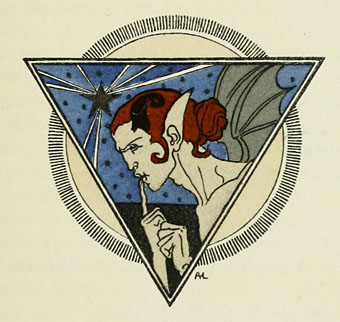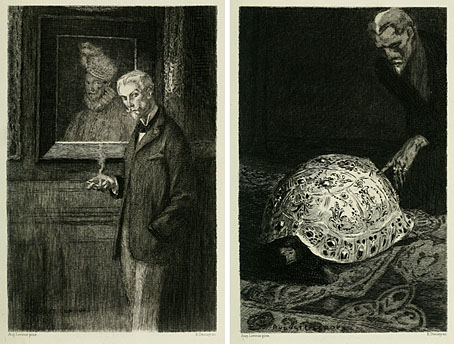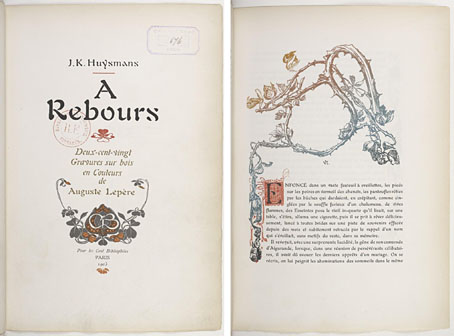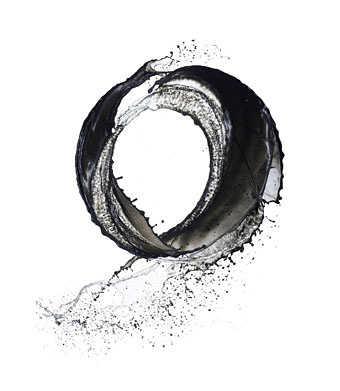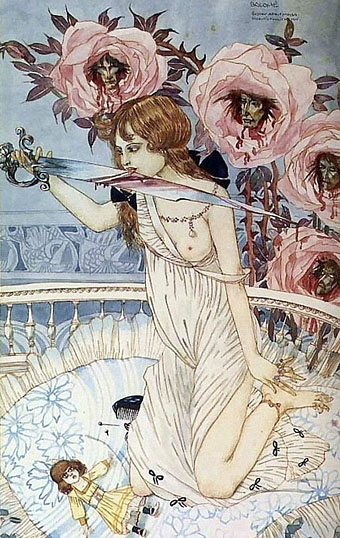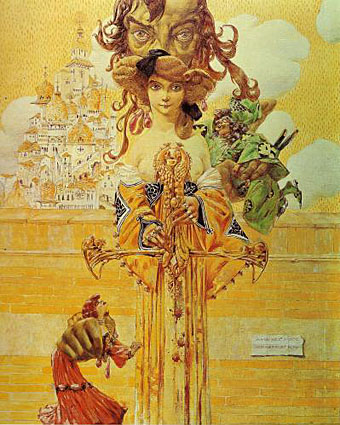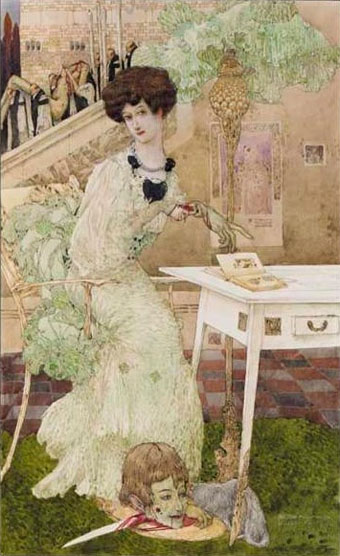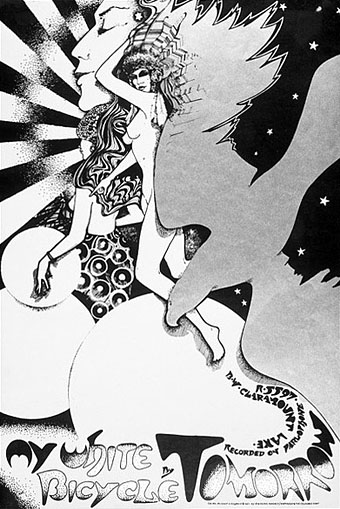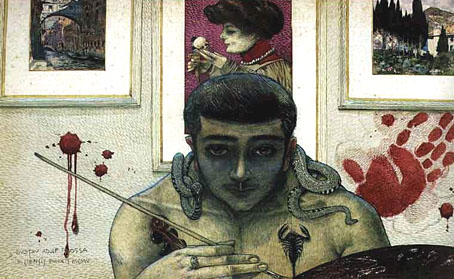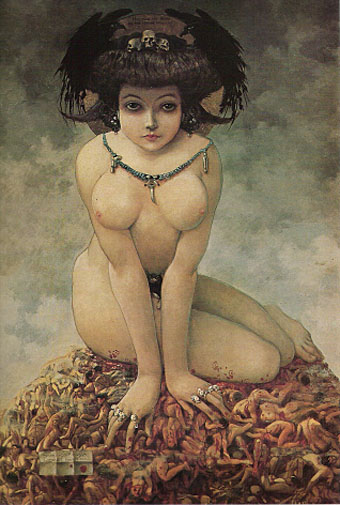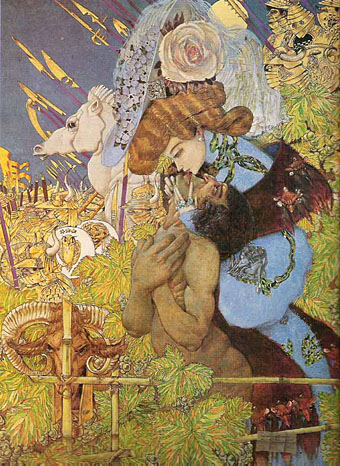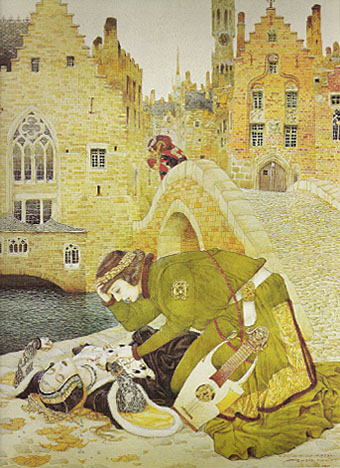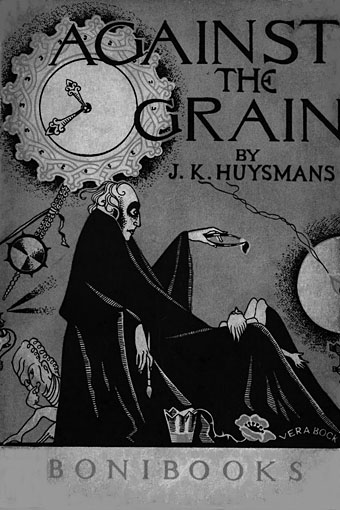
Not a comprehensive post by any means but a few items worthy of note for readers of Joris-Karl Huysmans’ Decadent classic. The Vera Bock cover is from a 1930 American edition which turned up here last year. Thanks to Jescie for drawing my attention to the presence of my Haunter of the Dark collection on the same site. Vera Bock is an unusual choice of illustrator for this particular novel, there’s more of her work and details of her career at A Journey Round My Skull.
Auguste Leroux’s edition (above & below) is from 1920 and can be downloaded at the Internet Archive although the copy there seems to have had many of its full-page plates stolen. The artist produced an illustrated Memoirs of Casanova a few years later and he seems here to have concentrated on the more salacious aspects of Huysmans’ story, as with this brothel scene which is missing from the scanned edition. His depiction of Des Esseintes looks too middle-aged for me but the rendering of the unfortunate jewelled tortoise could hardly be bettered.
Browsing the archives at Gallica turned up this extraordinary Art Nouveau edition from 1903 illustrated and embellished on every page by Auguste Lèpere. This would be an excessively lavish treatment for most books but for a story of aesthetic obsession it seems quite appropriate. Gallica also allows the downloading of many of their documents although that function kept failing my attempts. But this volume really does need to be seen in its entirety.
Elsewhere on { feuilleton }
• The illustrators archive
Previously on { feuilleton }
• Arthur Zaidenberg’s À Rebours

